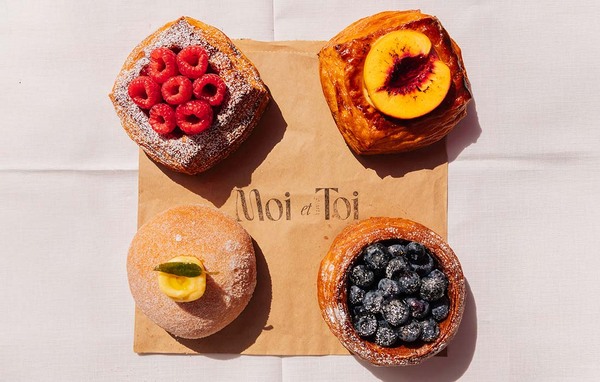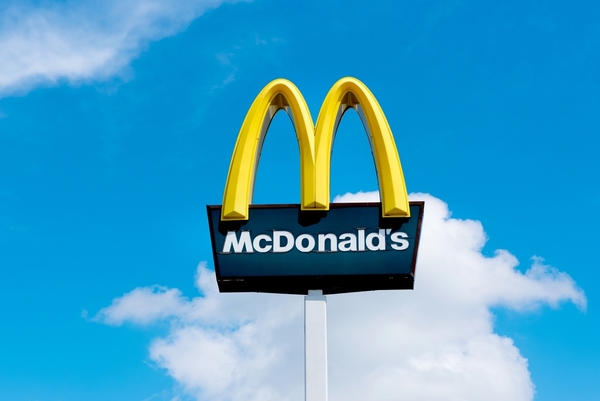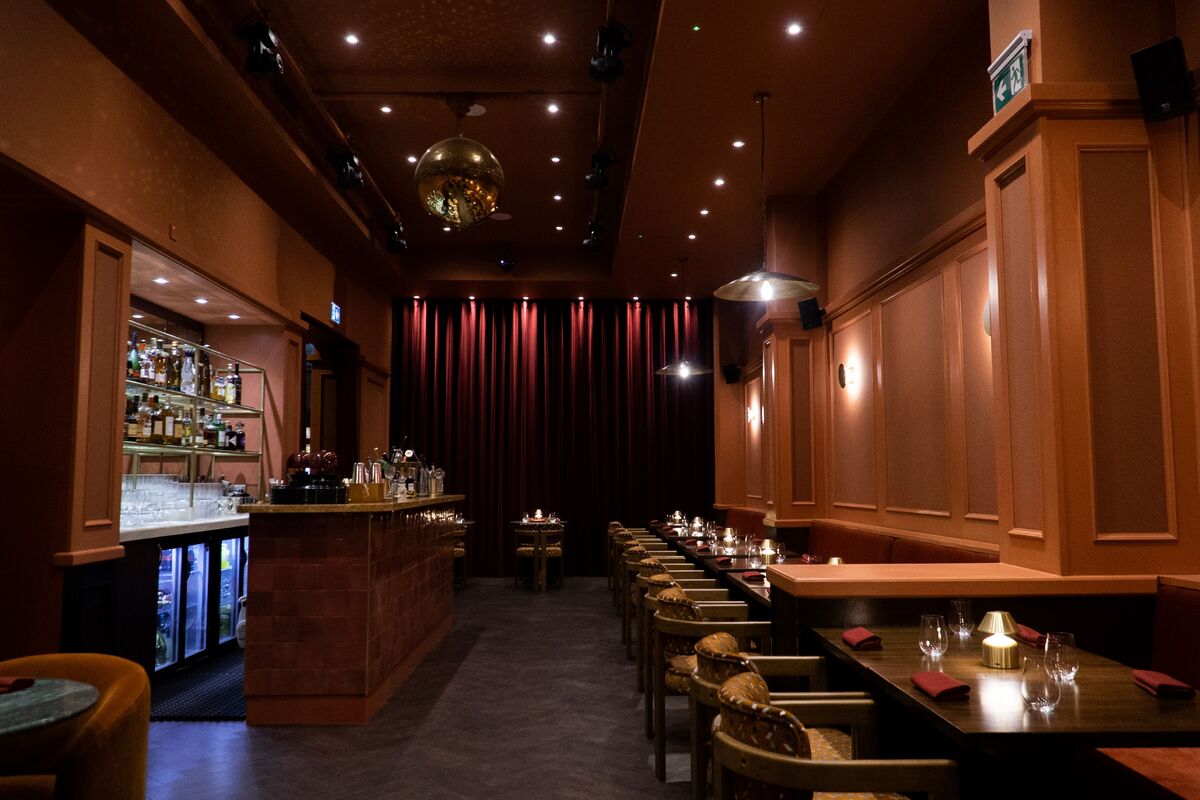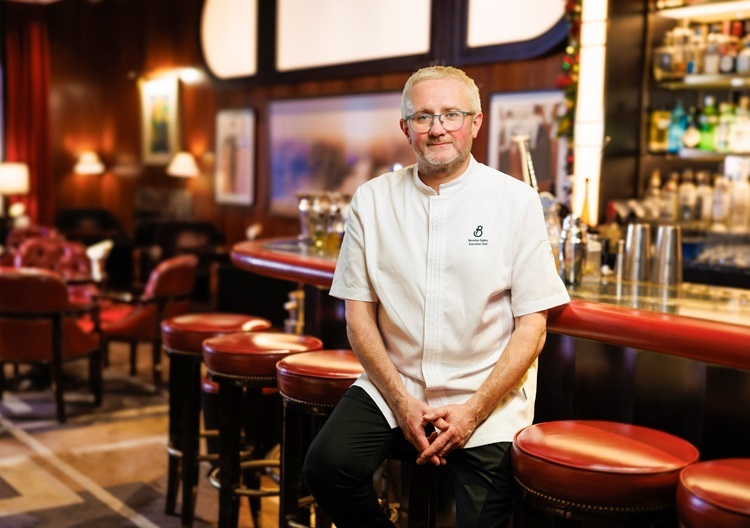Masterclass – Bruno Loubet's London Bouillabaisse
Bouillabaisse is a Mediterranean classic that appears in hundreds of cookbooks. Bruno Loubet, back in London at the Zetter hotel, has adapted the recipe for local ingredients and refined the recipe for professional kitchens. Michael Raffael reports
It's an iconic Provençal dish, identified with the port of Marseille. Served in its original form it would find few takers today, not even in a Marseillais restaurant. Various rock fish (mainly whole), potatoes, onions, garlic, saffron and orange peel were marinated in olive oil. The fisherman-cook put them in a pot with just enough water to cover. He brought this to a rolling boil - the "bouille" part - to emulsify oil and water. Then he turned down the heat, the "baisse" part to finish cooking.
By the time it was done it was a thick soup, probably delicious, with lethal bits and bones swimming in it. Diners sucked the juices from the heads. Health & Safety would probably close down any restaurant that tried to serve the authentic version. Bread, not croutons, was the usual accompaniment. The rouille was little more than mashed red pepper, saffron and broth.
In the UK we don't get "rascasse", the scorpion fish that is central to an authentic recipe. It's spiny, firm and a little mucilaginous. What we do have are gurnard and monkfish, both ideally suited to fish stews and a far better selection of fish than the polluted corner of the Mediterranean that is now Marseille can offer in any quantity.
PLANNING
Organise preparation around the soup. This isn't designed for a Marseille fisherman's dive. It won't improve by being left simmering on the side of the stove.
Batch size depends on the number of covers served. Fish for 10 generous portions will make more than enough soup.
Integrating with service
Fillet and portion the fish; prepare and chill the soup; stock it in manageable quantities - say, two to three portions; make the rouille and croutons; cook fennel and potatoes; reheat soup on a portion-by-portion basis; poach the fish, squid and mussels in the reheated soup.
COSTING
This can fluctuate wildly according to the type of fish chosen. It makes little sense to import Mediterranean rascasse and rockfish to the UK. Work with native, available species and the result will be good. In France, some restaurants toss a lobster into the pot and call it a "bouillabaisse royale". This is merely an excuse for salting the selling price.
Bear in mind that best-quality saffron, an essential ingredient, adds a significant amount to the cost, but don't skimp on it.
Cost price for 10 portions: about £50 Selling price for 10 portions: £180
FISH
(for 10 portions)
Ingredients
To supply about 1.5kg trimmed fish fillets
2 x 800g [large] gurnard, gutted
1 x 600g, bass, scaled and gutted
1-2 red mullets, scaled and gutted
700g monkfish tail
Of these, the gurnard and monkfish are essential, but other species such as bream, whiting, conger eel (if you are careful about removing bones) and ling will work. Avoid oily fish such as herring and mackerel. In Provence, John Dory is often included, but it will up the price.
And… About 60 cleaned mussels
300g cleaned squid or cuttlefish cut into 10 pieces
Preparing
Cut off the gurnard heads (make incisions on both sides of the head behind the gills). Cut off the fins. Remove the fillets from the backbone. Trim any bones on the belly flap. Pin-bone the fillets with tweezers.
With a sharp knife, remove the tough skin. Lay the fillet flesh upwards. Hold the blade edge against the skin and jiggle it back and forth to separate skin from meat without moving the knife.
Repeat the process with the bass and the red mullet, but don't skin either of them.
Pare away the membrane on the monkfish. Fillet it by cutting the two halves of the tail off its cartilaginous backbone.
Divide the fillets into 10 equal portions.
BONES AND TRIMMINGS You should have over 1kg of trimmings. Use them all.
Preheat the oven to 220°C. Split and roughly chop the fish heads. Spread out the heads, bones and trimmings on a roasting tin, brush with olive oil (about 50ml) and put them in a hot oven for 10 minutes to set the protein clinging to them. This will improve the soup's taste, texture and appearance.
VEGETABLES
Work on the basis that you are going to need equal quantities of vegetable mirepoix and fish bones and trimmings.
The whites of leeks and the fennel hearts are served with the fish.
To balance the flavours, use equal amounts of fennel, onion, carrot and leek and about half the quantity of celery.
Ingredients
For 10 portions (or more)
1 large onion, chopped
200g green leek tops, chopped
200g sliced carrots
200g roughly diced outer layers of fennel
100g roughly chopped celery
Fennel and leek Keep the hearts of the fennel and poach them separately to go in the finished soup. Depending on the fennel size you can split or quarter it. Allow one or two pieces per portion.
Slice the whites of leek on the slant into rings. Poach them separately to go into the finished soup. Allow three or four rings per portion.
Potatoes: 3-4 walnut-sized boiled, waxy potatoes are added to the soup when it's reheated.
SOUP
Stage 1: The base
200ml olive oil
1kg vegetable mirepoix
Salt
Flavourings: 1tsp each coriander and fennel seeds, toasted and crushed, 1 star anise, 3 sprigs thyme, 1 sprig rosemary, 1 bay leaf, peeled zest of 1 orange, 1/2tsp piment d'Espelette (smoked paprika), about 10 cloves crushed garlic
250ml dry white wine
350g tomato passata (tinned)
1kg freshly roasted fish bones and trimmings
2 litres water
Put half the oil in a large pan and add the mirepoix. Over a low heat, start to sweat it. As it starts to soften, add some salt (a generous pinch) and the rest of the olive oil. When the vegetables are cooked, turn up the heat and let them colour a little.
Add the flavourings and stir in well. Pour over the wine and boil. Add the tomato and boil. Add the fish bones and trimmings. Pour over water to cover by about two fingers. Boil, turn down the heat and simmer for 30 minutes.
Stage 2: Finishing Soup base
1 large pinch saffron strands, about 1g
Pernod to taste
1/2tsp piment d'Espelette
Salt and pepper
Tomato purée (optional)
Using a commercial stick blender, blend the soup to a coarse purée. Make sure you do this thoroughly to obtain the maximum body.
Force the liquid through a fine sieve, using the back of a ladle to press out the juices.
Transfer to a clean pan and taste. If the broth needs concentrating, reduce until it has a strong flavour. Add the saffron, Pernod, piment d'Espelette, salt and pepper. Simmer a little longer to extract all the colour and aroma from the saffron.
If you want to add tomato purée for colour, whisk it into the broth before reducing it.
You should still have about two litres of finished soup.
BOUILLABAISSE
(Serves one)
200ml soup base
50g monkfish
50g gurnard (approx)
1 piece bass
1 piece red mullet
1-2 pieces cooked fennel heart
1 piece of squid
6 mussels
3-4 cooked leek rings
3-4 pieces boiled potato
In a small sauteuse, bring the soup base to the boil. Add the monkfish and gurnard. Simmer for no more than two minutes.
Add the other ingredients. Take off any direct heat. Cover with a cartouche of greaseproof paper and rest (keeping hot) until served. Just reheat for a few moments if necessary.
ROUILLE
Rouille and croutons are the classic fish soup or bouillabaisse accompaniments.
The French word "rouille" translates as "rust" and is a pointer to the colour of this classic sauce. It has almost endless variations. At first it was a mixture of red pepper and saffron combined with a couple of tablespoons of the broth added back to the soup to give colour. It has evolved over time and there are dozens of Provençal variations - some based on mashed potato, others on mayonnaise.
Bruno Loubet has his own take. He makes a classic garlic mayonnaise (equal quantities of vegetable oil and olive oil) flavoured with saffron water and a purée of roasted red peppers. He blends this with unseasoned boiled potato passed through a ricer: two parts mayonnaise to one part mash.
Tricks
Dry-roasting the bones - it makes for a cleaner-looking soup with a more concentrated flavour because the protein doesn't leech out and form a scum during simmering.
Sweating the vegetables over a low heat at first then turning up the flame allows them to cook thoroughly before a light caramelisation.
Poach the fennel hearts and leek rings in the broth at "stage 2". They'll absorb the broth's flavour and contribute more of their own to it.
Be careful not to cook the saffron too long or it will lose its aroma. A good way of extracting the maximum from it is to pound it with a little boiling water in a mortar before adding it to the soup.
BRUNO LOUBET

















